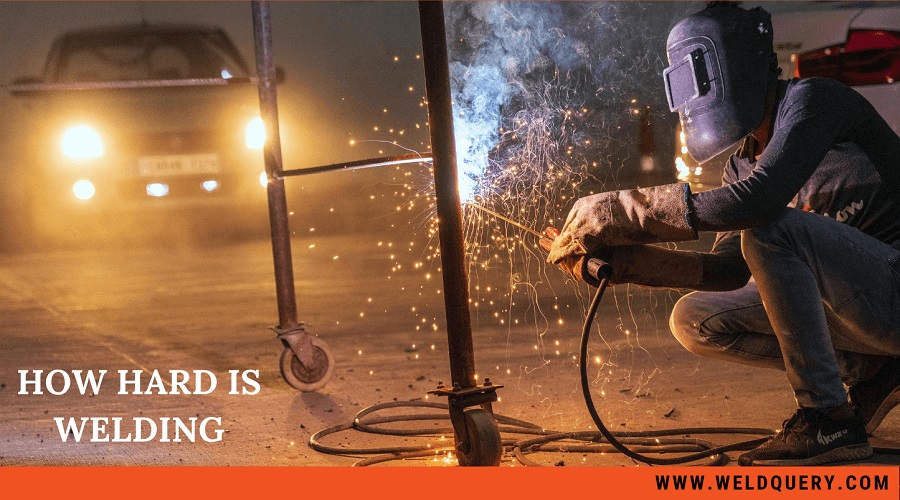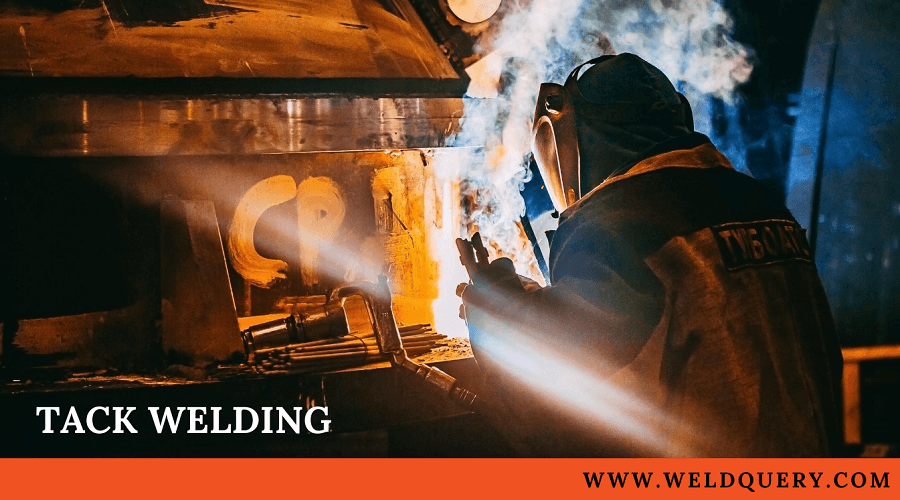When it comes to bonding metal, welding is not always necessary. There are many alternatives available for welding.
Here, I am giving an idea of how to join metal without welding.
Contents
What Is Welding?
It is obvious to you readers to know about what welding is; still, I am giving a brief explanation here.
Welding is a manufacturing process that joins or fuses materials like metals or thermoplastics by heating and melting to form a secure bond. After being joined, the melted metal needs to cool down to form a solid bond. A welding machine or a welder can only do this welding process.
However, the whole process of joining metals together can be done without welding by yourself. If you have other tools, experiences, and ideas about how to do it.
And if you do not have any idea about the alternative procedures of joining metals, then this article is the most accurate one for you.
Why not Welding?
There are several reasons for someone not to weld metals, but to think otherwise. The whole welding procedure can be very difficult. Especially for those who do not have any welding machine or welding experience.
Many people may find the welding procedure very dangerous. Working with a welding machine is quite dangerous if you do not have any experience. Buying a welding machine can be expensive for some people.
Well, now you may question that buying a welding machine is costly and welding thyself is dangerous, then how about hiring a person or going to a welder who can weld the metals for you.
But you see, hiring a welder is very costly too. On the other hand, a lot of people like to do their manufacturing work at home by themselves.
How to Join Metal Without Welding?
The following are a number of ways to join metal without welding:
- Adhesives
- Overlap Joint with Hardware
- Riveting
- Brazing
- Soldering
- Nanotechnology
Adhesives:
The adhesive is a non-metallic substance applied to one or both sides of two different materials to bind or stick them jointly to resist their separation. There are few fitting adhesives to join metals together, such as epoxy, polyurethane, as well as double-sided tape.
Glue guns are very effective adhesive. To bind metals together, you have to apply a certain adhesive to the surfaces. Then press them together to get attached to each other.
Pros:
- The most inexpensive method.
- There is no risk of self-harming or harming anyone.
- Easily accessible. You can find it at any nearby drug store, grocery store, or hardware shop.
- Very easy to carry.
Cons:
- It is not as strong and durable as other systems so that the bond can grow weaker gradually with time.
Overlap Joint with Hardware:
Basically, an overlap joint is two pieces of metal which are overlapped on one another by a hole drilled or punched through which allows connecting the metals by specific hardware. It is basically completed by using some hardware with bare hands.
These are: nuts, bolts, screws, screwdrivers, etc. It can satisfactorily join two substances that fit inside one another.
However, it is mostly applicable to sheet metals than solid ones.
Pros:
- The second easy way to join metal after glue. Specially, the sheet metals.
- Very affordable.
- Easier to fix.
- Not a permanent method. So, you can undo it easily if necessary.
Cons:
- It creates little resistance to bending. So, it can form a curve, a gap, or a leak.
- Not very strong, which is why not recommended while working with solid or heavy metal.
- Less Durable compared to heating systems or riveting.
Riveting:
Riveting is very similar and another overlapping joint process, or I can say it is the better version of the previously discussed method. To join two metals by riveting involves a rivet machine or gun.
Where overlapped join with hardware doesn’t require a machine, you can do it by your bare hands. It is also a sheet metal joining technique but forms a stronger bond than the previous one. The process uses fasteners to create a stable bond between the surfaces. The fasteners are basically similar to what screws or bolts are.
The difference between this two hardware is that fasteners are used as a restraint for holding things together or attaching to other things. You have to place it by a pre-drilled hole then pound the tail of the nail. Pound it until it becomes wider from the shaft, and it gives a flat and expands result.
You don’t need to heat the metals or use glue during the procedure. It gives an effective result on shear loads. As it uses lightweight materials that require strong connections, it is commonly preferred in construction projects. Window blinds, gutter construction, wind guards, and hanger straps and windows are normally installed by riveting.
This process is also used in aircraft and ships. As it is also another kind of overlapping join, on sheet metal, the rivet method’s usage is favored over welding as the heat can cause deformation of the sheet metals.
Pros:
- No heat is needed.
- It holds way better than overlapping joins with hardware.
- It is best for joining bonds between lightweight or sheet metals.
- Easier and better than welding in case of joints
Cons:
- The joints can form a gap which might lead to a leak or hole.
Brazing:
The brazing method heats and melts metal to join the two pieces of metal together. That is why it is quite similar to the welding process. But it is more like an adhesive because of the filler metal.
Depending on this process, various metals can be made by the filler component for brazing. These various metals are silver, nickel, cobalt, magnesium, aluminum-silicon, copper phosphorus, etc.
The brazing process functions at a higher temperature, because the melting point of these materials is high.
Filler metal connects these metals together securely after attaching them through heat. Moreover, the process of brazing produces a very strong bond, as the surfaces of the metals melt with the filler substance.
Brazing is used to join materials of automotive engines, jet aircraft engines, air conditioning systems, refrigeration systems, bathroom faucets, kitchen cutlery, etc.
Pros:
- It requires less temperature than the welding process.
- Less expensive than the welding method.
- Different implementations are suitable for the process of brazing.
- It can cause a strong bond which is similar to the welding process without a huge amount of heat.
- Some brazing equipment can be portable.
Cons:
- The filler metal has a softer base so that the joint is not enough strong like welding.
Soldering:
Similar to the welding and brazing method, soldering also involves heating the metal. Like brazing, it also requires a filler metal.
However, the temperature is below 800 degrees Fahrenheit, which is less than brazing. This method is used to form an electrical connection instead of a mechanical connection. This method is mostly applicable to electronics and circuit boards.
As this process is for electrical connections, and not for mechanical connections, naturally, the bond’s structure is not much strong.
Soldering involves a low melting alloy, especially the one which is tin and lead based and for higher temperature based on silver otherwise brass, which is used for connecting less fusible metals.
To solder any metal, you will need a soldering iron. In the past, most of the soldering process only contained lead, which now has changed. The soldering process is also used in very few metal works from flashing to jewelry and musical instruments other than electronics and circuit boards.
The electric devices which parts require the soldering process are- televisions, radios, computers, calculators, cell phones, etc.
Pros:
- The process requires a lower temperature than welding and brazing.
- Safer than welding.
- The method of soldering is very useful for circuit-based devices.
- Soldering tools are also portable.
Cons:
- The soldering process has a weaker bond than other processes like brazing or welding.
- It cannot be used in every kind of application.
- The method cannot form strong mechanical connections and mostly form electrical connections.
Nanotechnology:
For joining sophisticated materials without welding, nanotechnology is a new method that is still in the developing process. It is also known as nanomaterials and nanoscale sculpting.
By a particular etching technique, it roughens the metal surface and completes it by utilizing 3D printing. It creates a very solid bond by giving a fine hook-like formation.
This process does not require many safety measures and able to use in joining large, heavy components. This joining method is used for vehicles like cars, bikes, ships, etc.
With its development, it will use in varieties of different applications; one of the most important is medical technology. The process is still in observation and not fully developed.
Pros:
- It involves much less dangerous than any other method.
- It creates a stronger bond.
- The process can function at room temperature.
- With development, the process can be utilized in various types of applications and technology.
Cons:
- It is not fully developed yet.
- It can be expensive at the beginning.
The Bottom Line:
Although the welding process creates a very strong bonding between two metal surfaces, it can be costly as well as dangerous for you.
However, this costly and dangerous process can be replaced with some other methods mentioned and explained above with their pros and cons. I hope you find all the answers to your questions in this article.


